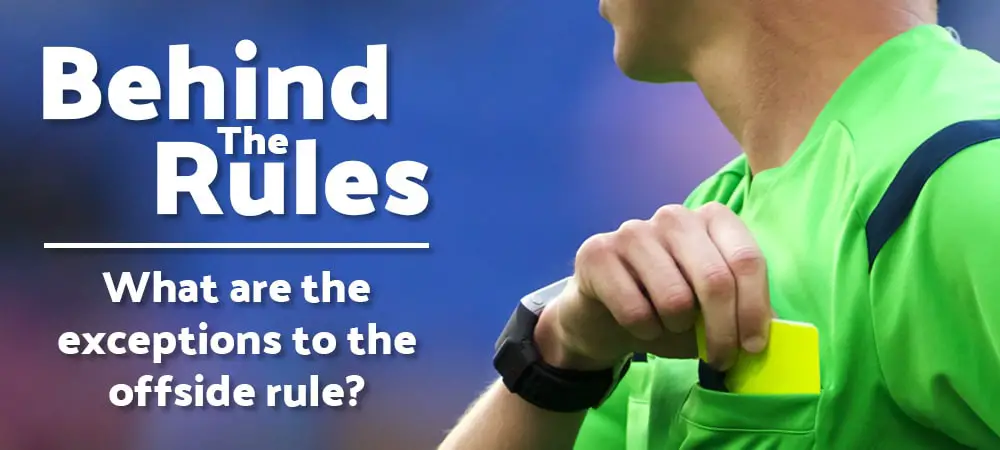Disclaimer: some of the links on this page are affiliate links. We will make a small commission on purchases made through them at no cost to you.
There are a few exceptions to the offside rule, some of which players can use to their advantage to get behind the defensive line without being flagged. Below is a list of these exceptions and in the rest of this article we’ll take a look at each of these exceptions along with a few examples.
- The receiving player is in his own half when the ball is played
- Thrown ins, goal kicks and corner kicks
- The ball is deliberately played by opposing team
- The player is behind the ball
- The player in an offside position is not involved in play
The receiving player is in his own half when the ball is played
If the attacking player receiving the ball is in his own half when the pass is made, he is not considered offside. When he receives the ball he can be in the opponents half, but he must be in his own half when the pass is made.
Read more: Can you be offside in your own half?
Thrown ins, goal kicks and corner kicks
A player cannot be offside directly from a throw in, goal kick, or corner kick. You might occasionally notice a team try and use this exception by taking a quick throw in to a player making a run in an offside position to gain a significant advantage.
In the clip above, Ronaldinho is clearly stood in an offside position, but since he received the ball from a throw in, it’s perfectly legal.
The ball is deliberately played by opposing team
If the ball is deliberately played by a defender before the attacker in an offside position touches it, he is not considered offside. However, if the ball is deflected off the defender rather than deliberately played, the player is considered offside.
Read more: Can you be offside if the ball comes off a defender?
The player is behind the ball
Many people assume the attacking player must be behind the second last defender when the ball is played to be onside. However, the rules state a player is in an offside position if:
Any part of the head, body or feet is nearer to the opponents’ goal line than both the ball and the second-last opponent
https://www.thefa.com/football-rules-governance/lawsandrules/laws/football-11-11/law-11—offside
So as long as the player receiving the ball is behind the ball when it’s played then it isn’t considered offside, even if there are no defenders between him and the goal line.
Read more: What’s the offside rule when you’re past the last defender?
The player in an offside position is not involved in play
As long as a player is not involved in a play, he is allowed to be in an offside position. However, if he affects the game such as getting in the way of a defender or obscuring the goalkeepers view, he is considered offside and a freekick will be awarded to the opposing team.
In the clip above, the commentators mistakenly believe an incorrect offside call is is made for a pass building up to the goal. However, when the shot is taken, a Belgian player in an offside position is obscuring the view of the England goalkeeper and this is the reason it is called offside. If you look closely at the linesman, he flags after the shot rather than the pass leading up to the shot.
Thanks for reading!
